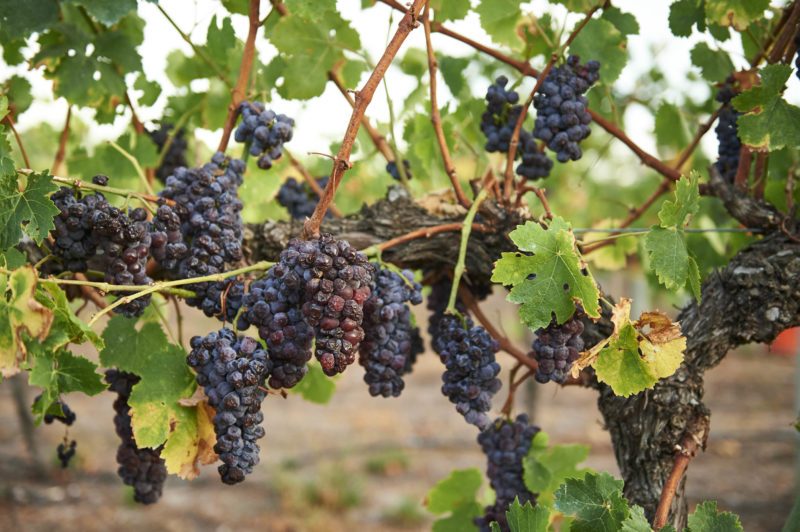John’s often asked what is his favourite wine? And he always replies along the lines of he loves all types of wines – but only if they’re good. Pretty unhelpful really!
But the truth is he really loves fortified wines best of all. And of fortified wines he loves vintage port and liqueur muscat the most. Why – their fundamental richness and intensity, their heritage, and especially the way they develop such delicious complex flavours with age.
In the case of vintage port it is age in the bottle, for liqueur muscat it is age in barrels before blending. These wines when ready to drink have a favour that transcends their individual components – fruit and oak and added spirit. With their origin as very ripe grapes, their sweetness, their added alcohol, and many years of aging these are the most intensely flavoured of all wine styles.

Great vintage ports – there are the Australian styles and the Portugese styles. From Portugal John is entranced by Qunita do Vesuvio – a famous vintage port from a famous Quinta – powerful like its name suggests. From Australia the wonderful VPs of Chateau Reynella are hard to beat. When it comes to Liqueur Muscat, Morris of Rutherglen is king, although for great age Chambers will always be special.
For John liqueur muscat is not just about drinking them – it’s creating them too. There is something almost primeval about fortified wines. They date back three or four hundred years (which in truth is pretty recent in wine history).
Alcohol was added to wine to preserve it during shipping, and later the technique of adding it to the fermenting grape juice to make sweet wines became popular. The resultant high alcohol preserves the wine and allows it to keep – in barrel or bottle – for a very long time.
Fortified winemaking is very simple – it’s things that those ancient winemakers could control – very ripe grapes, brandy, time and the skill of blending.
After learning about fortified winemaking at college, John’s first experience in the winery was in Rutherglen in 1985. Working vintage at All Saints and Chambers the making of fortified wines, especially liqueur muscat, was preeminent.
Working on these wines – during vintage, blending them, ageing them, was virtually spiritual for the winemakers. They meant so much to them. They were proud and driven to make beautiful wines and treasured their barrels of aged wines. They passed on their passion for these wines to John.
The purity of the flavour of the muscat grapes, the incredible ripeness. The strangeness of adding spirit (95% alcohol distilled from wine) and seeing the fermentation stopped dead. The incredible age of some of the wines in the cellars. The small batches hidden away in the dusty dark recesses. These were handmade wines, simply made, relying on raw grape flavour and patience, hidden away waiting to burst forth in all their glory at some point far in the future.
It’s not fiddly winemaking and they are not subtle wines. It’s raw and primitive, no scientific knowledge required. It’s craftsmanship learnt and practised over a long time.
There are many types of muscat grape. Since the infection of the Rutherglen vineyards with Phylloxera from 1899, quarantine has halted the distribution of Brown Muscat vines to other grape growing areas. In Griffith in 1988 John was happily tasked with making liqueur muscat from Red Frontignan which is an excellent variety but doesn’t achieve the flavour and ripeness that Brown Muscat does in Rutherglen. When he moved to South Australia’s Riverland in 1990, Red Frontignan was also used to make Liqueur Muscat. The wines were excellent but different in style to the muscats of Rutherglen.

Coming to the Swan Valley in 1993 John made Liqueur Pedro and Liqueur Verdelho at Houghton, but no muscat. The Swan Valley, like Rutherglen, has a long history of making fortified wines. The styles are riper, sweeter and fuller than their counterparts in Rutherglen.
Despite the long-time quarantine of Rutherglen, John was surprised to discover that the variety known locally as Red Frontignan is actually not that, but happily the original Rutherglen Brown Muscat. How this came about is unknown, but quite possibly its origin in WA predates Phylloxera.
John’s quest to make Liqueur Muscat has become a foundation of Faber. He planted an acre of ‘Brown Muscat’ in 2000 and more in 2016 and has had the time to develop a stock of aged liqueur muscats in barrel, allowing him to create our fabulous blends. It’s his labour of love and the best is yet to come.
